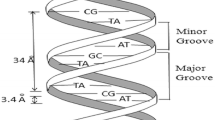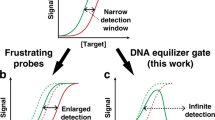Abstract
We developed a simulator to aid those who design algorithms and protocols for DNA computing. In this simulator, abstract sequences instead of real DNA sequences are used to represent molecules in order to increase efficiency of simulations. Two approaches for simulation are available: threshold and stochastic. The simulator consists of two main parts, one for finding reactions among existing molecules and generating new ones, and the other for numerically solving differential equations to calculate the concentration of each molecule. The two parts rely on each other. In particular for the threshold approach, the former avoids a combinatorial explosion by setting a threshold on concentrations of molecules that can take part in reactions. In addition, the stochastic approach is also available for simulations which are hard by the threshold approach. Some simulation results by the approaches are also presented: computation of Boolean circuits, whiplash PCR, formation of DNA tiles and polymerase chain reaction (PCR). We also integrate simulating DNA computation and fitting parameters by the genetic algorithm (GA), where simulation results are used as evaluation functions for the genetic algorithm. The integration is applied to find good protocols for PCR amplification. A trial to refine the reaction model for hybridization is also described before the final discussion on the simulator.
Similar content being viewed by others
Explore related subjects
Discover the latest articles and news from researchers in related subjects, suggested using machine learning.Author information
Authors and Affiliations
Rights and permissions
About this article
Cite this article
Nishikawa, A., Yamamura, M. & Hagiya, M. DNA computation simulator based on abstract bases. Soft Computing 5, 25–38 (2001). https://doi.org/10.1007/s005000000062
Issue Date:
DOI: https://doi.org/10.1007/s005000000062




